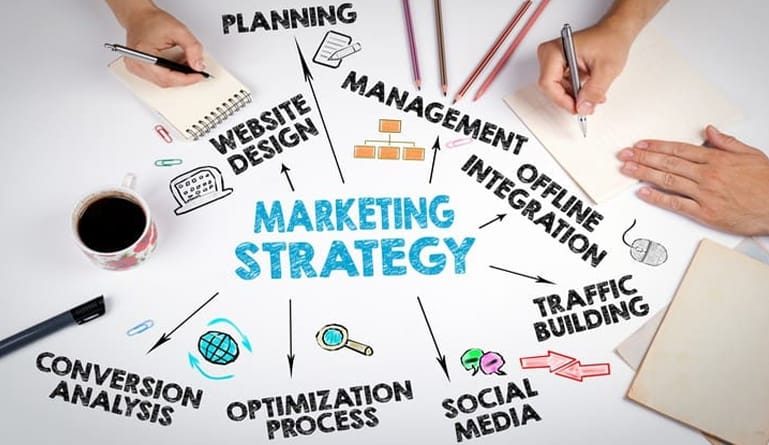Contents

A distribution channel is a network of enterprises or intermediaries through which a product or service passes before reaching the final customer or end consumer. Merchants, distributors, wholesale food suppliers, and now more popularly the internet, can all be used as a distribution channel.
The downstream process includes distribution channels, which answer the question, “How do we get our products to the customers?”. In contrast, the upstream process, also known as the supply chain, responds to the question “Who do we supply from?”.
Choose the Distribution Channel That Is Right for You
Because not all distribution channels are suitable for all products, businesses must select the appropriate one. The channel should be consistent with the overall mission and strategic vision of the business, as well as its sales objectives. The distribution technique should add value to the consumer and not take away from it.
Do customers wish to talk with a salesperson? Will they want to try the product before making a purchase? Or do they prefer to buy it without any particular communication online? Answering these questions can help businesses decide which channel to use. Second, the company should think about how soon it wants its product(s) to reach the buyer. Certain products are better served by a direct distribution channel such as meat or fruit, while others may benefit from an indirect distribution channel.

Be Careful with the Food Supplier
One of the most dynamic businesses out there you could be involved in is owning a restaurant chain. Everyone loves them and the need for them seems to be never-ending, and in fact, growing. This is why the quality of your food has a significant impact on whether or not customers return to your restaurant.
Distribution channels in the restaurant business often begin with your choice of the food supply service system. This is where you buy or purchase your goods online. Choosing a high-quality provider is critical because a bad reputation for low-quality food can ruin your business. Investigate various suppliers and request references from them or ask industry contacts for recommendations.

Create a Relationship with an Online Vendor
Various businesses sell online restaurant equipment beyond just food supply that includes all you need to get started with your restaurant. When you have a relationship with your vendor, you may easily order supplies and equipment when you run out. These providers will frequently set up a workflow in which they will notice when you are out of stock and discover seasonal patterns in your ordering.
For example, if you are in a summer tourist town and are only open during those months, a reputable restaurant equipment firm will contact you at the beginning of summer to ensure that your freezers and refrigerators are in good working order. Tableware is one of the things that need to be replaced on a more frequent basis than others. Also, glassware and table items are dropped and broken often, therefore finding a trusted source to buy flatware and tableware online relieves that additional stress.

Keep Your Circle Tight and Things Simple
Begin with a single supplier. As simple as that. Your objective is to have a small number of providers. If your concept permits you to operate with only one provider for each of your essentials, avoid complicating your operations and start building your relationships in a close circle.
For each service, obtain three to five quotes. This will allow you to compare prices without spending too much time researching the market. Larger companies are in a better position to negotiate costs, so you should utilize quotes from smaller companies as leverage to get better bargains. That’s why you should begin small and work your way up: seek quotations from small businesses first, then larger ones.

You’ll want to start cultivating relationships with smaller vendors early on, especially if you’ve opted to work with them. Attend farmers’ markets when you know your vendors will be there and talk to them about their products. When they realize that you are enthusiastic about what you do, they may be more open to giving you discounts and bulk promotions in the future – and even go as far as suggesting your restaurant to their customers.
And don’t forget to negotiate. Never ever sign with the first vendor who provides you with a quote before gathering a significant number of additional quotes. If you notice other suppliers with cheaper products, don’t be scared to bargain with the supplier you want to work with.
Explore Different Marketing Strategies
Just as your choice of reliable food suppliers, advertising your restaurant is critical to be able to keep up with a successful distribution channel for your company. Print, radio, and television advertisements all help to bring in new customers. These people may read one of your advertisements in the newspaper and decide to visit your restaurant. Serving great, high-quality food entices consumers to return, and there’s a good possibility they’ll bring friends or promote your institution to others.
Taking advantage of the internet and social media in the digital age brings attention and incentivises trips to your restaurant. Create a restaurant website that includes your menu, nutritional information, and specials or promotions. Invite clients to join your restaurant’s mailing list and provide them with useful information. You may also set up a Facebook page for your restaurant and invite people to “Like” or subscribe to it. Use these platforms to advertise discounts or deals, such as complimentary appetizers or two-for-one steals.

Know What You’re Getting Into (But Don’t Be Discouraged)
Starting and running a restaurant is not an easy undertaking. There are numerous factors at work all at once. That’s why restaurants have a substantially lower success percentage when compared to other industries. And many people are put off by the risk of starting their own. Still, a restaurant can be a very profitable endeavour if done well. However, it’s critical to understand what you’re getting yourself into and to learn about the market and the needs of your potential customers.

